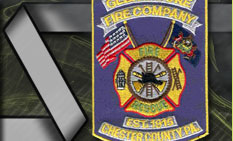| On Wednesday evening, crews gathered for their weekly training. The topic focused on chimney fires. The training reviewed the construction of various types of chimneys as well as the different materials used in chimney construction. There was a discussion about the strategies and tactics of handling a chimney fire. Lastly, crews reviewed the tools that comprise the "chimney kit" and which tools are needed to manage a chimney fire.
The Facts About Chimney Fires
1. Dirty chimneys can cause chimney fires, which damage structures, destroy homes and injure or kill people.
2. Each year thousands of homes experience chimney fires due to improper maintenance of their chimney. In fact, most chimney fires are caused by creosote, which is a by-product resulting from the incomplete combustion of wood. It builds up on the sides of your chimney as a liquid and later condenses into a solid. As it builds up it not only blocks the flue but can ignite into a fire.
3. Chimney fires can easily be prevented.
4. Clean your chimney. It is recommended that you have your chimney professionally cleaned and inspected at least once a year. A professional chimney sweep will do more than brush out your chimney. They will also inspect your chimney for cracks, damage to liners, improper installation and much more.
5. Use dry wood. If your wood is not fully cured or is wet, it will not burn as hot as dry wood normally does. It will also produce more smoke. Burning wet wood can also lead to creosote building up faster in your chimney.
6. Burn the hardest firewood you can find. Burn hard woods, i.e., hickory, ash, or maple that have been seasoned for at least one year.
7. Lack of air supply also causes chimney fires. If your fireplace cannot draw in enough air, creosote forms. Make sure your damper is open, and once fire is going keep glass hearth doors open to encourage airflow.
8. Safety Precautions
a. Never leave your fireplace unattended.
b. Do not use flammable liquids to start or accelerate the fire.
c. Keep the area around the chimney or woodstove clear of any debris, decorations and flammable materials.
d. Installing CO detectors in your home is the finishing touch to provide peace of mind and keep your family safe throughout the year, not just during the cold winter season when we have our fireplaces on. |







